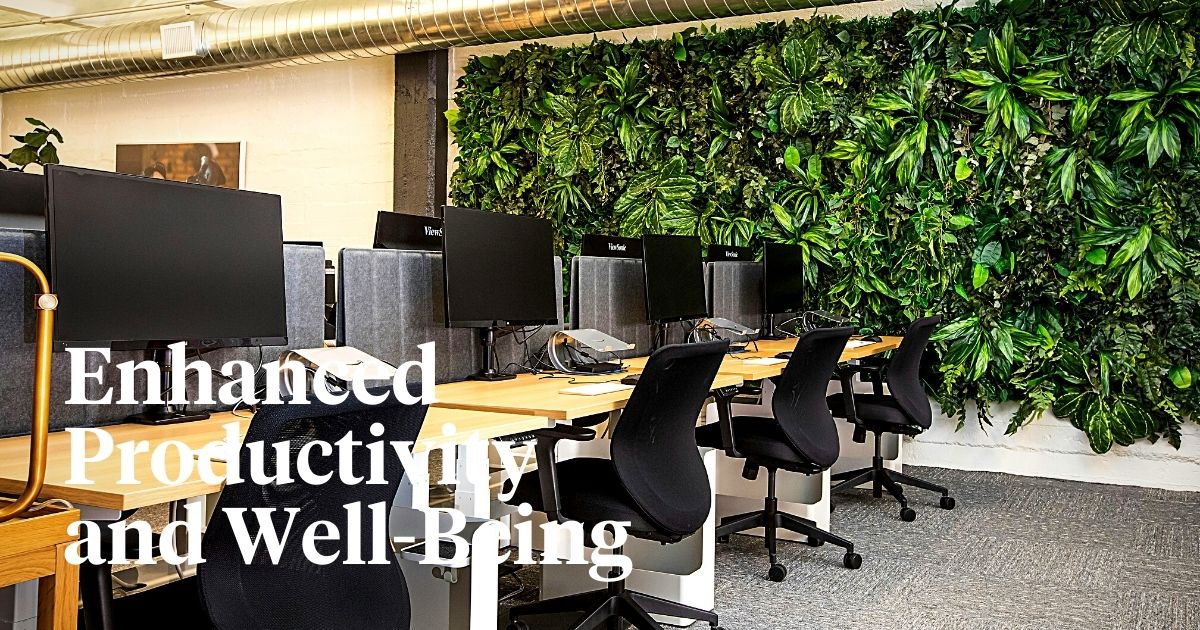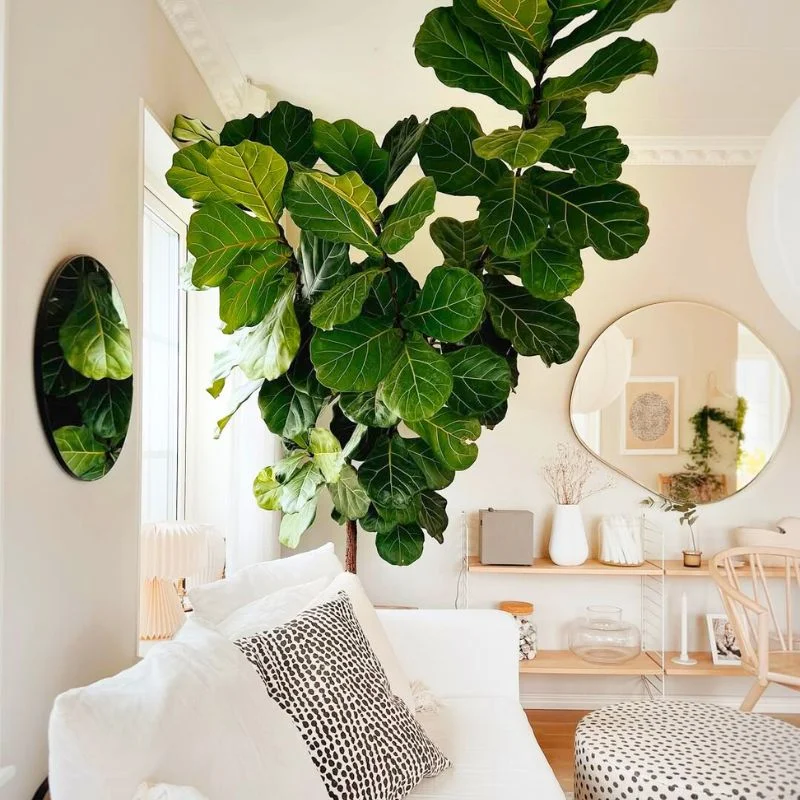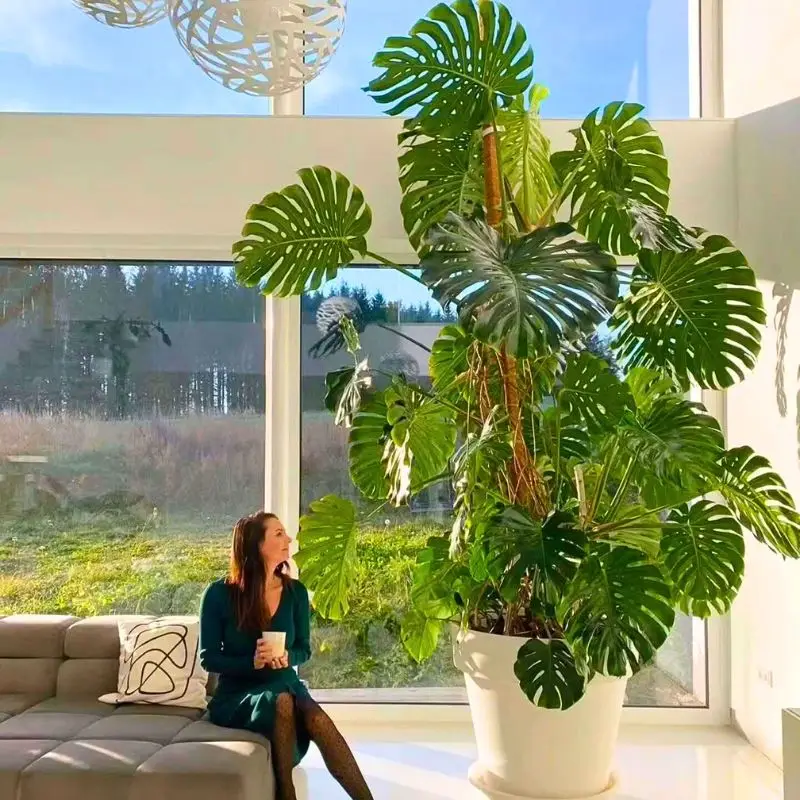Today's work environments are often fast-paced and, at most times, demanding. Regardless of where one works, creating a conducive working space that promotes well-being and productivity is crucial. One innovative solution that has kept on gaining popularity in recent years is the integration of living walls, also known as green walls or vertical gardens, into working spaces.
A living wall is a screen that is partially or completely covered with vegetation. It is a form of urban gardening that allows plants to grow vertically, creating a luxurious green and natural feature in both indoor and outdoor spaces. These living installations offer numerous benefits, making them the perfect inclusion to your office or any other workspace.
The Aesthetics of These Vertical Gardens
Living walls can be constructed using various techniques and mechanisms. They typically consist of structural support, such as a specially designed panel or frame, which holds the plants and their growing medium in place.
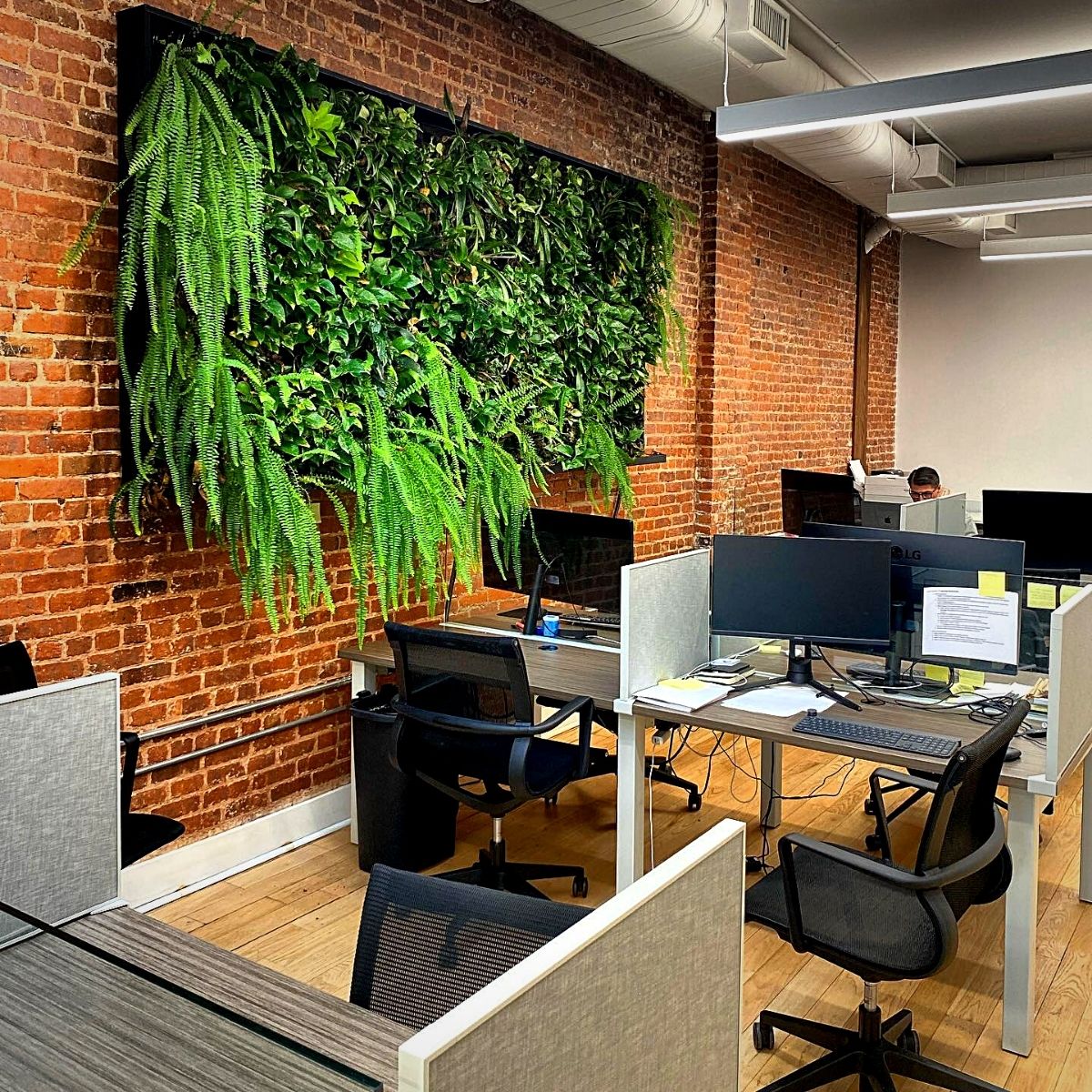
Photo by eco.brooklyn
The florae are usually arranged in a way that allows their roots to be in contact with the growing medium while the rest of the plant grows vertically. There are two main types of living walls: soil-based and hydroponic.
Soil-based living walls are composed of plants that are grown in a soil-based growing medium, similar to traditional gardening. The growing medium retains water and nutrients necessary for plant growth. Soil-based living walls are often used in outdoor applications where the weight of the wall is not a concern.
Hydroponic living walls, on the other hand, use a soilless growing medium, such as rock wool or felt, to support the plants. Water and nutrients are delivered directly to the roots through an irrigation system. This type of living wall is popular in indoor environments where mass and maintenance considerations are important.
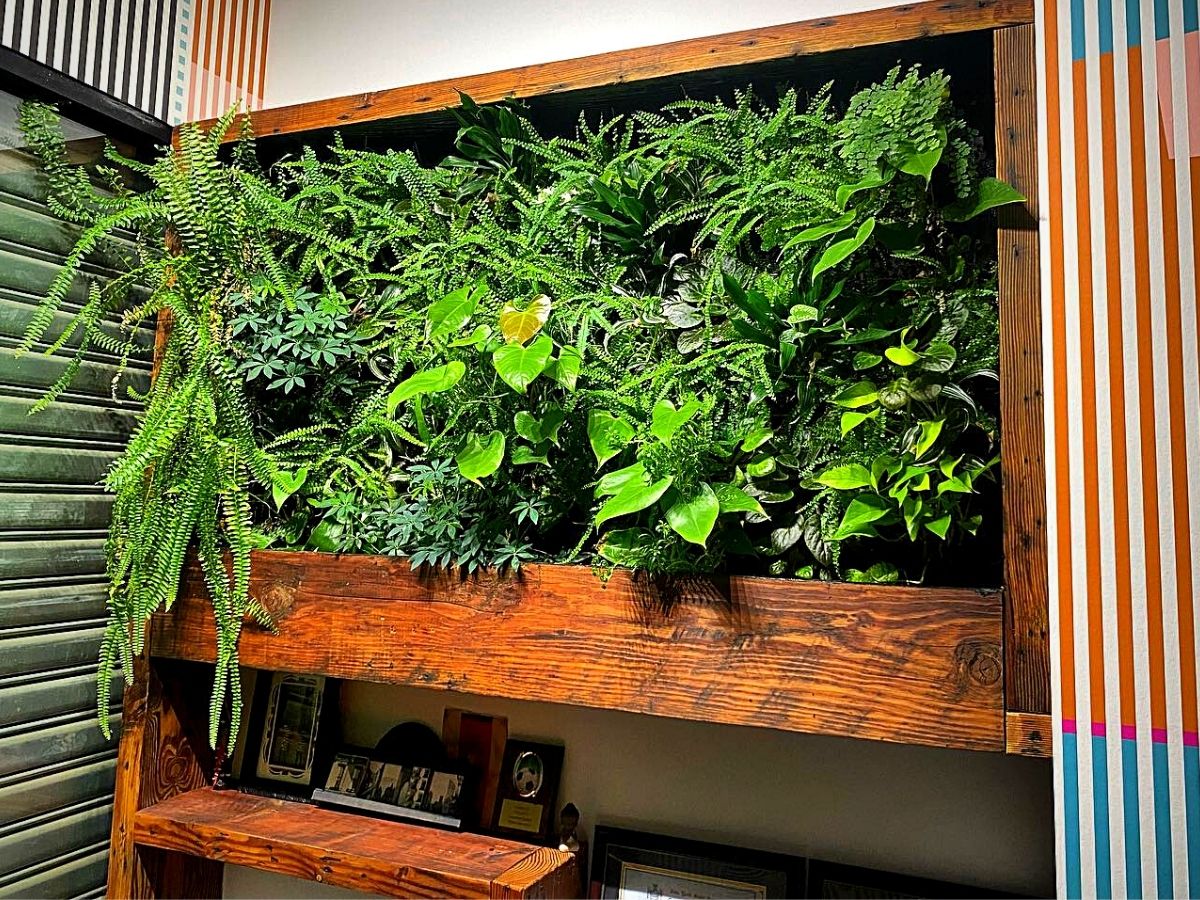
However, regardless of the type one chooses for their working space, the results are, almost, nearly all the same; enhancing the aesthetics of the space, plus a whole lot more benefits.
Benefits of Living Walls in Workspaces and Office Settings
These features can be a great addition to working spaces for several reasons. Their most obvious value in such settings is the visual impact of the introduction of lush greenery into the working area. The vertical arrangement of plants creates an attractive visual display, adding elements like depth, texture, and vibrancy to otherwise bare walls. Just looking at these plants lifts one's spirits. Plus, the different shades of the green plants - and other floral colors associated with nature - create a calming and refreshing atmosphere, and in turn boost overall productivity as they elicit a sense of nature indoors,
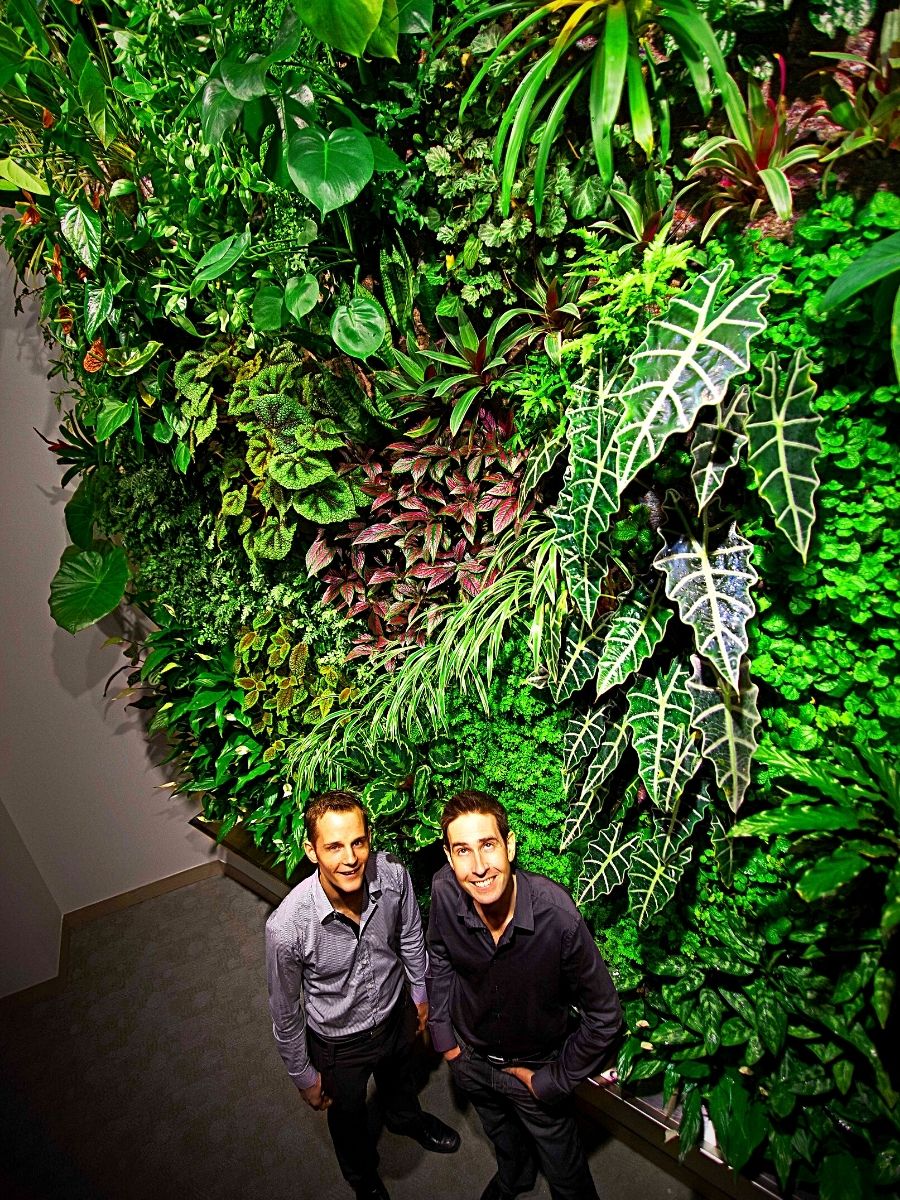
Indoor air quality can be a concern in office buildings due to the presence of pollutants such as volatile organic compounds (VOCs) emitted by furniture, carpets, and office equipment. This is a vital factor that impacts the health and comfort of employees. Living walls shine in this aspect by acting as natural air purifiers. Through the process of photosynthesis, plants absorb airborne pollutants - the VOCs - and release fresh oxygen. This filtration effect leads to cleaner, healthier air, reducing the risk of respiratory issues and enhancing overall employee well-being.
More than that, studies have shown that exposure to nature and greenery can have positive effects on mental well-being and productivity. Having living walls in working spaces, therefore, provides a connection to nature, reduces stress, and enhances mood, leading to a more pleasant working environment and, potentially, increased productivity from those using these working spaces.
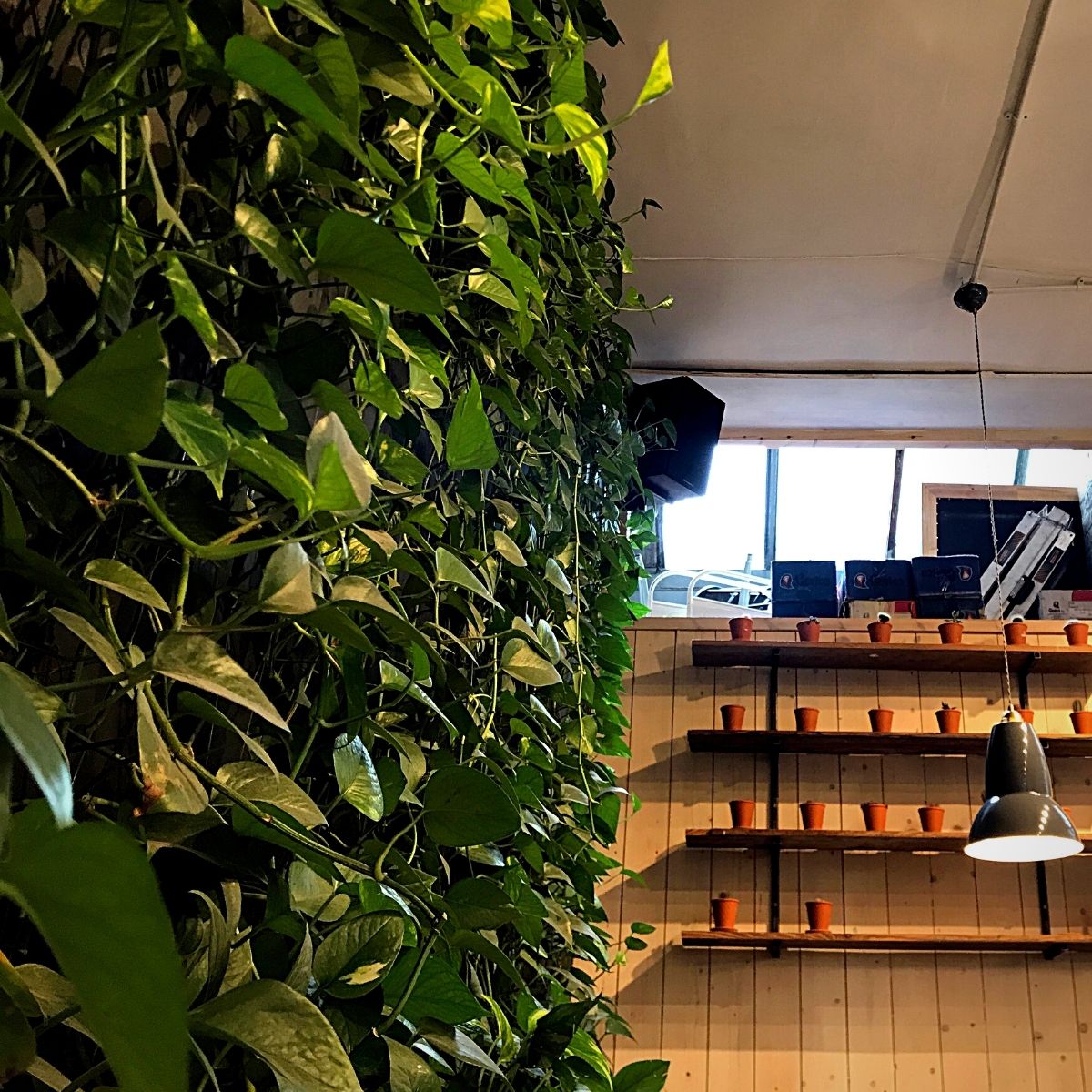
Photo by Bex Walton on Wikimedia Commons
Numerous studies have, also, demonstrated the positive impacts of plants and nature on human cognition and productivity. Since introducing living walls into working spaces provides a direct connection to nature, they promote a sense of calmness, reduce stress, and improve focus. The presence of greenery has been shown to enhance cognitive performance, creativity, and problem-solving abilities, ultimately leading to increased output and efficacy in the workplace.
In such working spaces that, normally, require silence and quietude, the plants in living walls can help absorb and diffract sound waves, reducing noise levels in the office, and creating a quieter and more peaceful atmosphere. This is, especially so, in open-plan office settings where noise and other distractions are often commonplace.
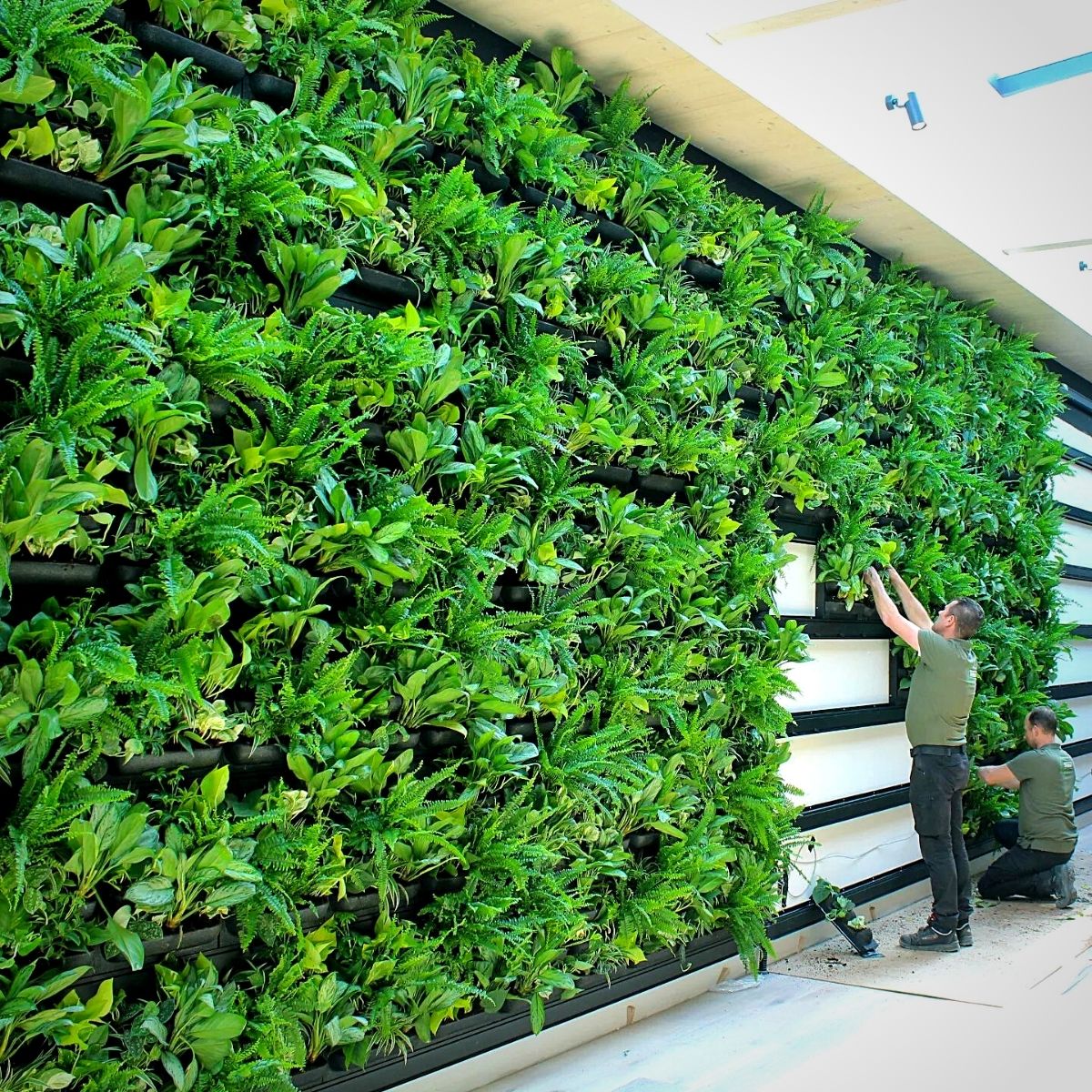
Also, biophilic design principles emphasize the importance of incorporating elements of nature into built environments and, as a result, living walls are a remarkable visual feature that transforms plain walls into vibrant, living facades. In this perspective, the lush greenery, textures, and natural beauty of the plants create a visually appealing ambiance that induces a sense of serenity. This kind of charm contributes to a positive and welcoming workspace. Staff, therefore, feel more connected to nature, enhancing their overall satisfaction.
Another significant advantage of living walls is their vertical orientation, which optimizes the use of limited spaces in working environments. Unlike traditional potted plants that require floor space, living walls allow for the cultivation of plants vertically, making them ideal for compact offices or spaces with minimal room for conventional gardens. Since they take up little floor space, such a perpendicular approach harnesses the benefits of greenery without compromising valuable work areas. Essentially, these plant features allow one to bring the benefits of plants into the workspace without sacrificing limited floor area.
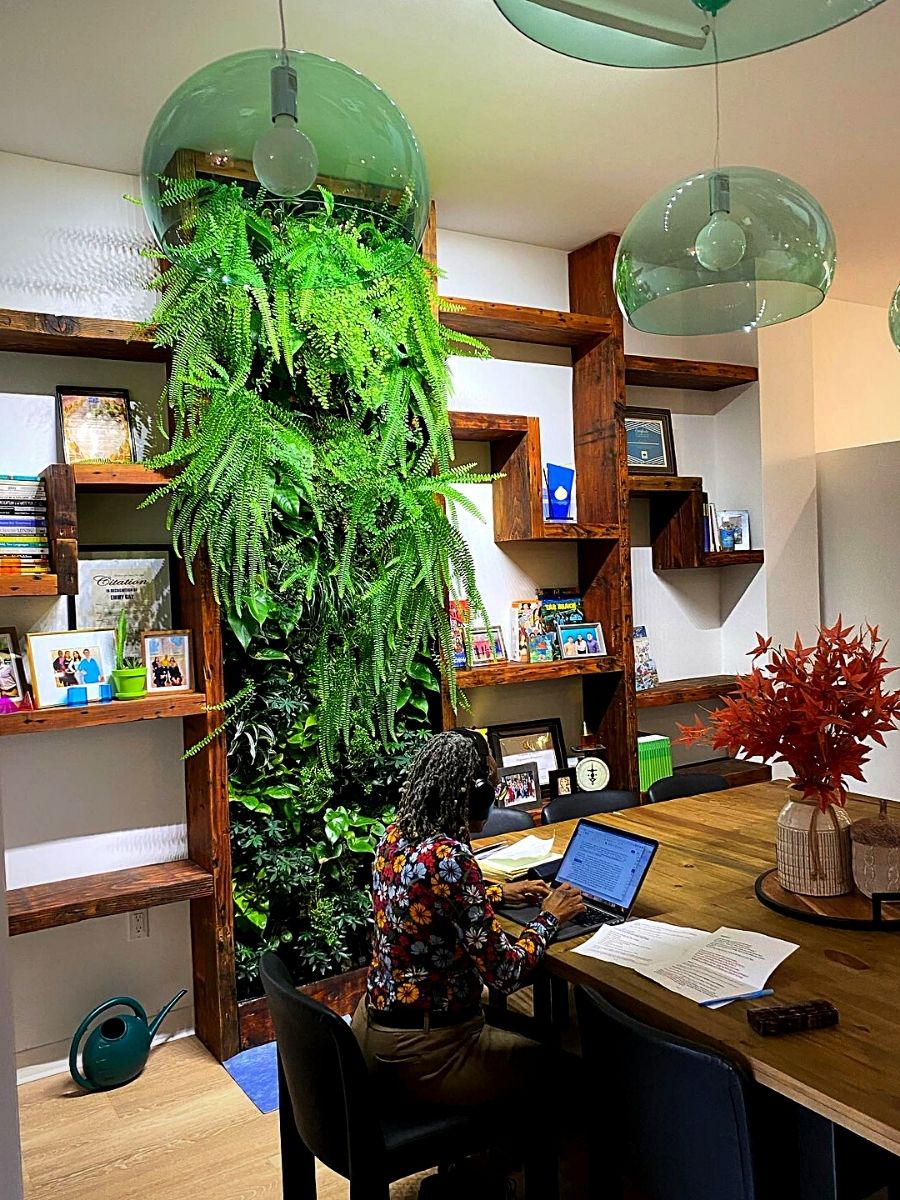
Such vertical gardens also contribute to urban greening efforts – which helps in addressing the urban heat island effect and other issues - especially in areas with limited space for traditional gardens. They allow for the cultivation of plants vertically, maximizing the use of available space. Such dense vegetation of the living walls can act as an insulating layer which reduces heat gain, especially, in the summer - and also heat loss in the winter. This can, in some way, save energy and increase comfort in buildings.
Plants for a Low-Maintenance Living Wall in a Working Space
When selecting the plants for these living wall features, it is often safe to opt for low-maintenance plants as they, in turn, warrant that the workplace living wall does not require intensive care. It is wise to consider the plants’ adaptability to indoor conditions, their resilience, and ease of maintenance.
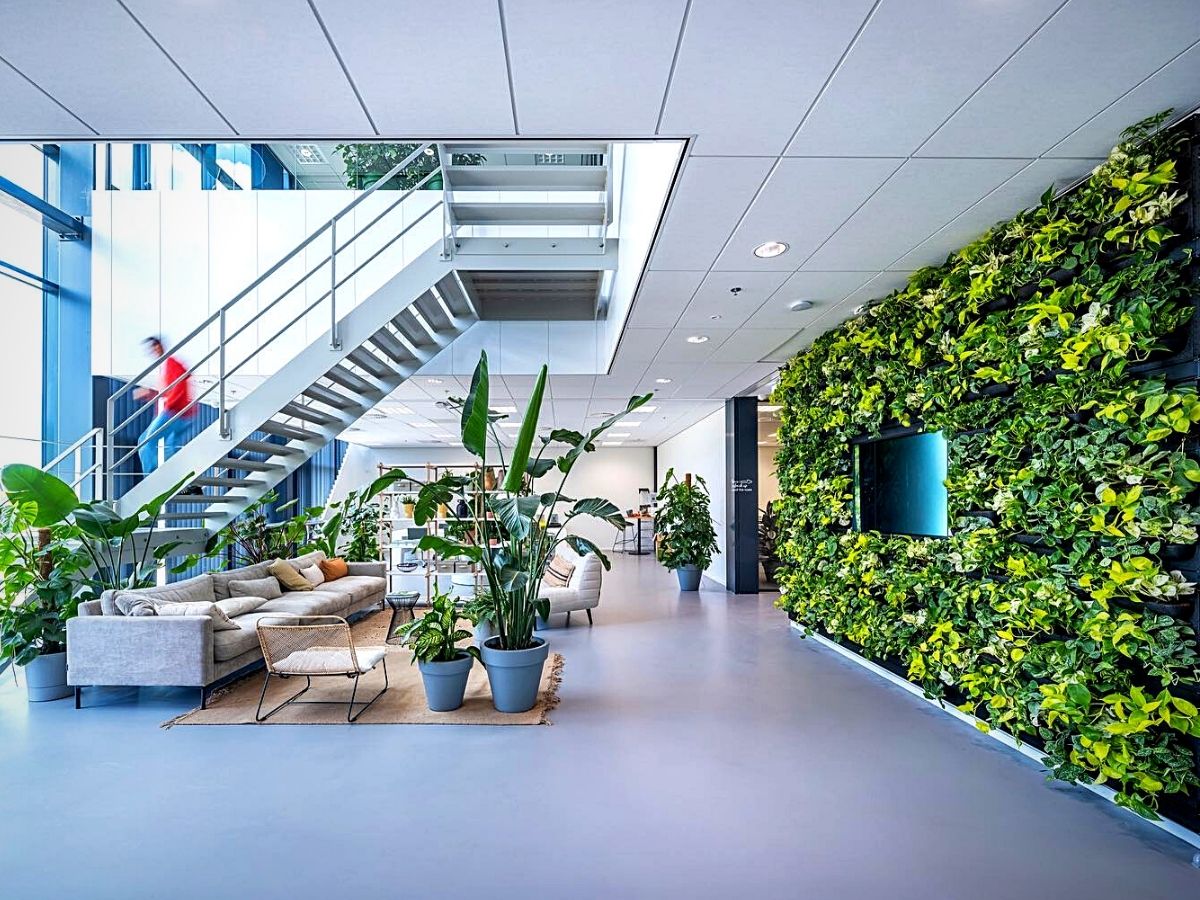
Some common plant options that are known to thrive in such environments with minimal maintenance include:
Pothos (Epipremnum aureum): A popular choice for living walls due to its trailing vines and tolerance for low light conditions. It can tolerate irregular watering and is relatively forgiving if maintenance is occasional.
Spider Plant (Chlorophytum comosum): Known for its long, arching leaves with variegated patterns. The plant is adaptable, resilient, and can tolerate a range of light conditions. Spider plants are also excellent air purifiers.
ZZ Plant (Zamioculcas zamiifolia): A hardy and drought-tolerant plant that can thrive in low-light conditions. It has attractive glossy, dark green leaves and requires minimal watering.
Snake Plants (Sansevieria spp.): Known for their upright, sword-like leaves that come in various shades of green and yellow. They are extremely resilient, can tolerate low light, and require infrequent watering.
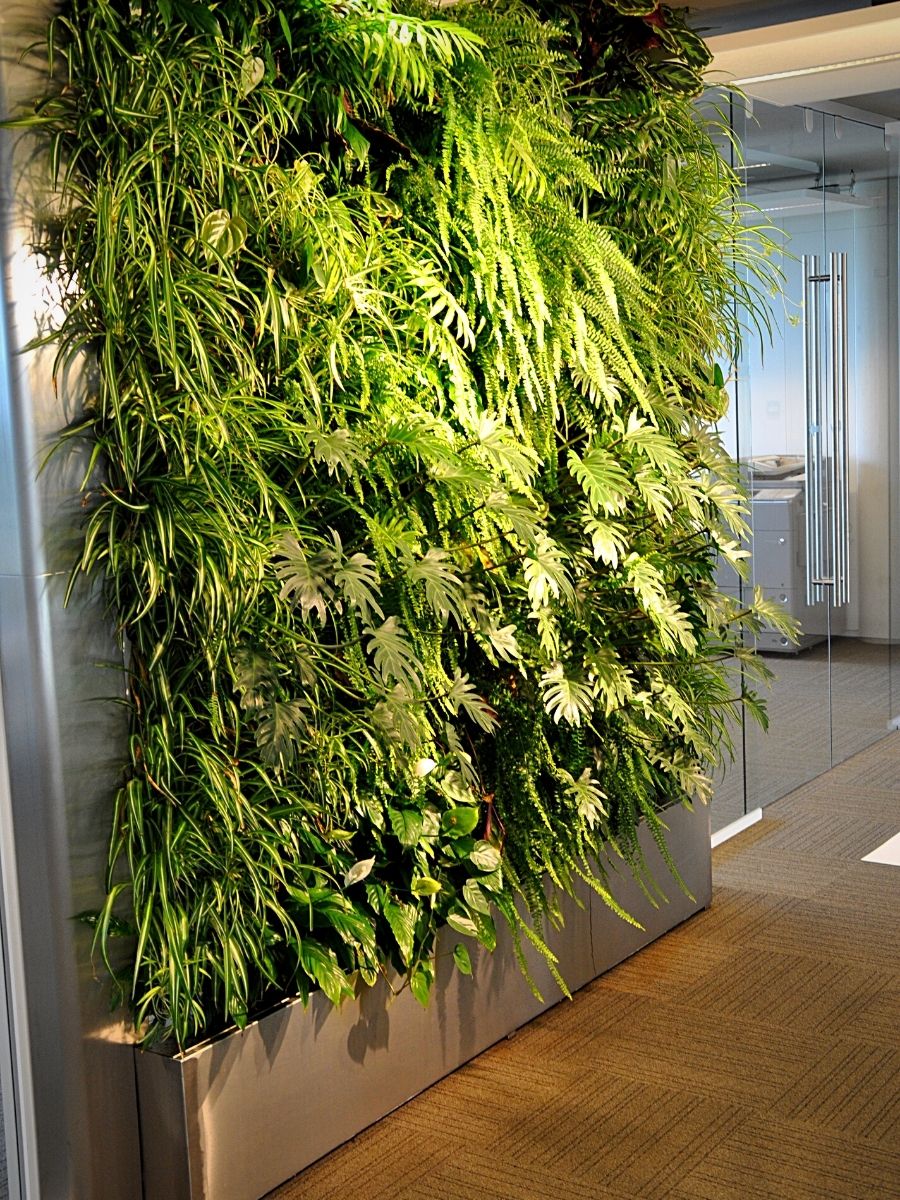
English Ivy (Hedera helix): A versatile plant that can be grown vertically on a living wall. It helps to filter out airborne toxins and can, also, tolerate low light conditions and irregular watering.
Air Plants (Tillandsia spp.): These unique plants do not require soil and can obtain nutrients from the air. They are low-maintenance and can be mounted on the living wall using special fixtures or creative display options.
Peace Lily (Spathiphyllum spp.): Elegant, dark green-leafed plants that produce beautiful white flowers. They prefer moderate to low light conditions and can show when they need watering by drooping their leaves, making it easier to know when to water.
Philodendrons (Philodendron spp.): A popular option due to their attractive foliage and tolerance for low-light environments. They come in various shapes and sizes, and many varieties are suitable for vertical gardening.
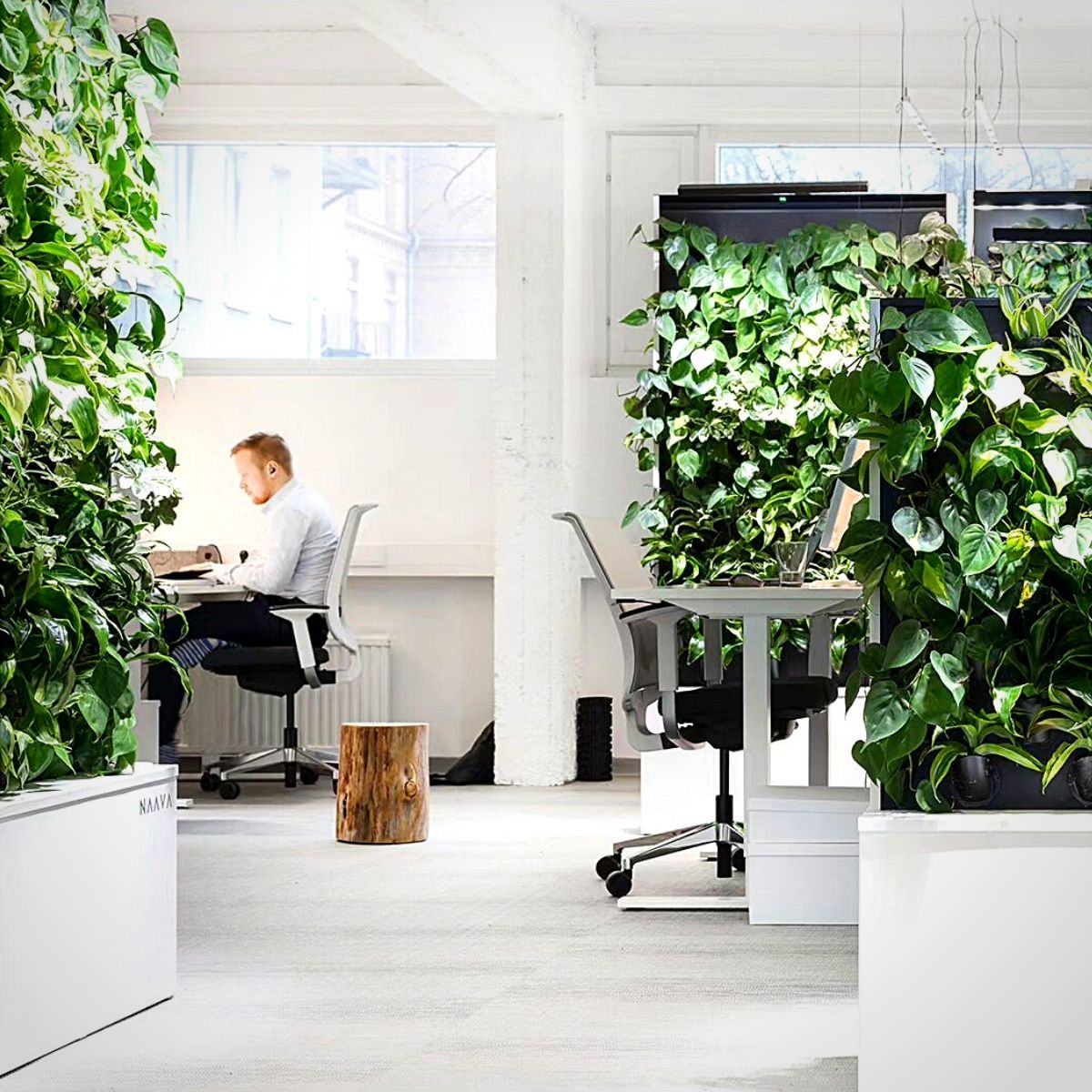
Integrating Nature and Biophilic Design Into Work Environments
The aforementioned plant options generally require infrequent watering and can thrive in indoor environments with moderate to low light levels. Nonetheless, it's important to consider the specific lighting settings and climate of the working space when picking the most suitable plants. Also, consider factors like accessibility for watering and maintenance when designing the living wall.
When everything is taken into account, it’s clear that adopting the concept of biophilic design and incorporating nature into work environments, creates pleasant and inspiring spaces that support both employees' physical and mental well-being.
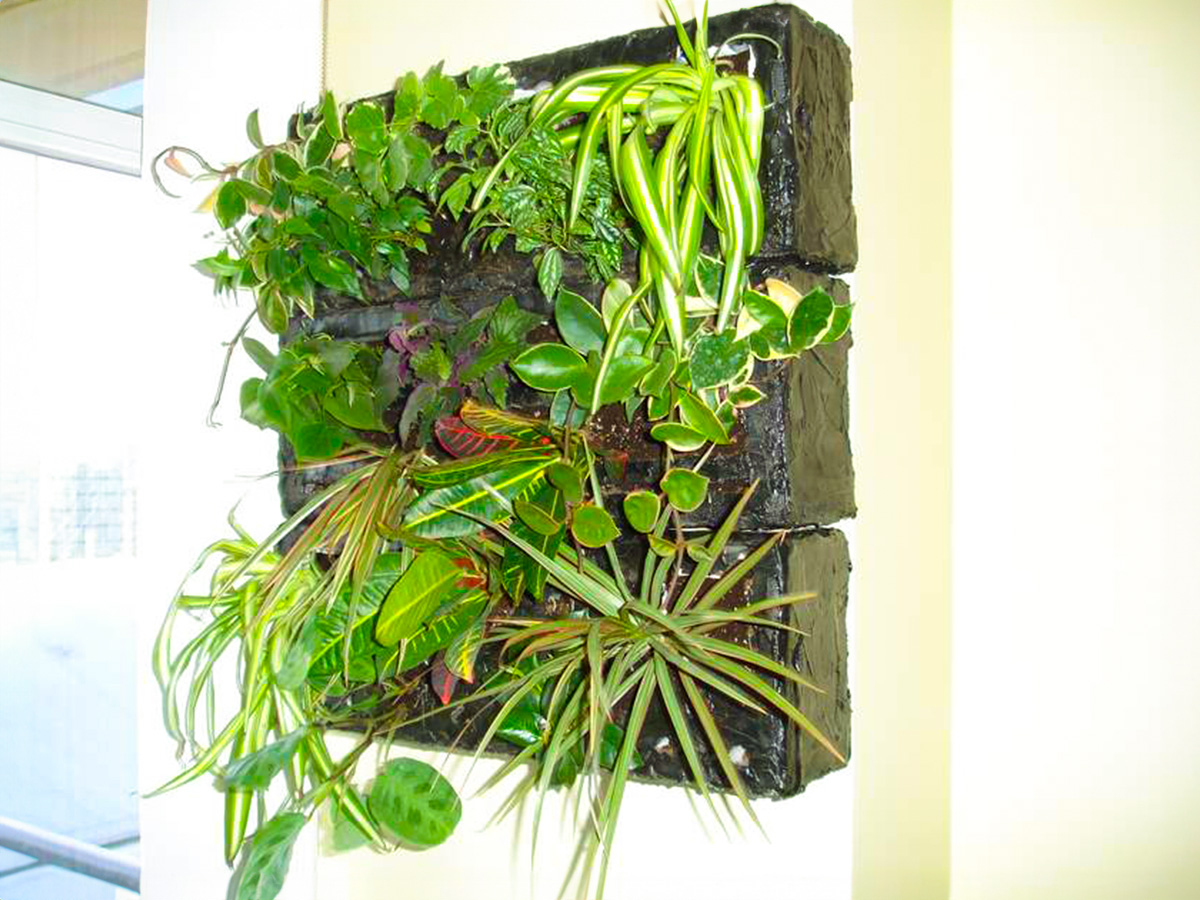
In such contexts, making use of the transformative power of living walls and unleashing their potential in working spaces, definitely, stands the test of time.
Feature image by @tenbrinke_interieurbeplanting, header image by Uneebo Office Design.

